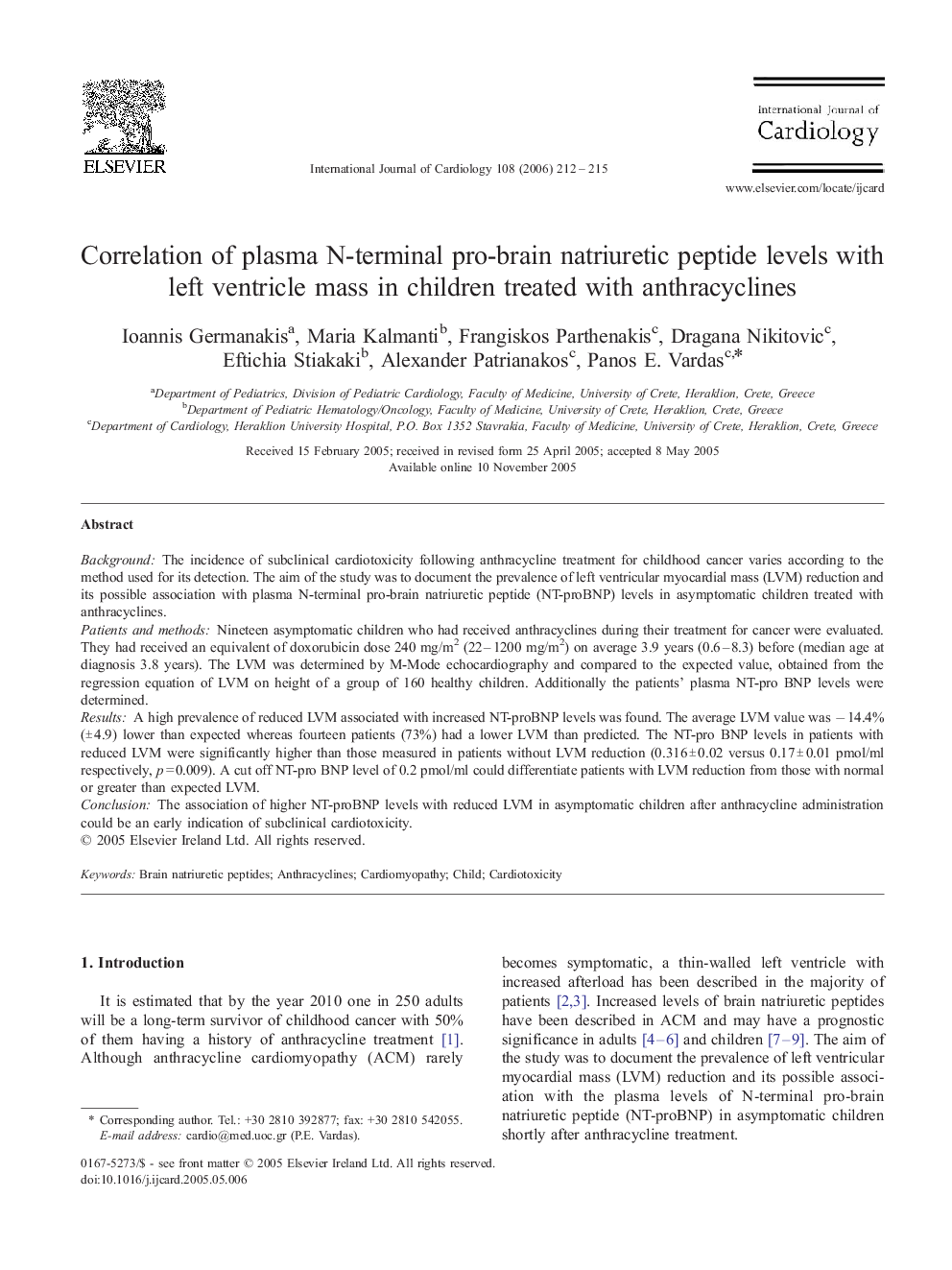| Article ID | Journal | Published Year | Pages | File Type |
|---|---|---|---|---|
| 2935958 | International Journal of Cardiology | 2006 | 4 Pages |
BackgroundThe incidence of subclinical cardiotoxicity following anthracycline treatment for childhood cancer varies according to the method used for its detection. The aim of the study was to document the prevalence of left ventricular myocardial mass (LVM) reduction and its possible association with plasma N-terminal pro-brain natriuretic peptide (NT-proBNP) levels in asymptomatic children treated with anthracyclines.Patients and methodsNineteen asymptomatic children who had received anthracyclines during their treatment for cancer were evaluated. They had received an equivalent of doxorubicin dose 240 mg/m2 (22–1200 mg/m2) on average 3.9 years (0.6–8.3) before (median age at diagnosis 3.8 years). The LVM was determined by M-Mode echocardiography and compared to the expected value, obtained from the regression equation of LVM on height of a group of 160 healthy children. Additionally the patients' plasma NT-pro BNP levels were determined.ResultsA high prevalence of reduced LVM associated with increased NT-proBNP levels was found. The average LVM value was − 14.4% (± 4.9) lower than expected whereas fourteen patients (73%) had a lower LVM than predicted. The NT-pro BNP levels in patients with reduced LVM were significantly higher than those measured in patients without LVM reduction (0.316 ± 0.02 versus 0.17 ± 0.01 pmol/ml respectively, p = 0.009). A cut off NT-pro BNP level of 0.2 pmol/ml could differentiate patients with LVM reduction from those with normal or greater than expected LVM.ConclusionThe association of higher NT-proBNP levels with reduced LVM in asymptomatic children after anthracycline administration could be an early indication of subclinical cardiotoxicity.
